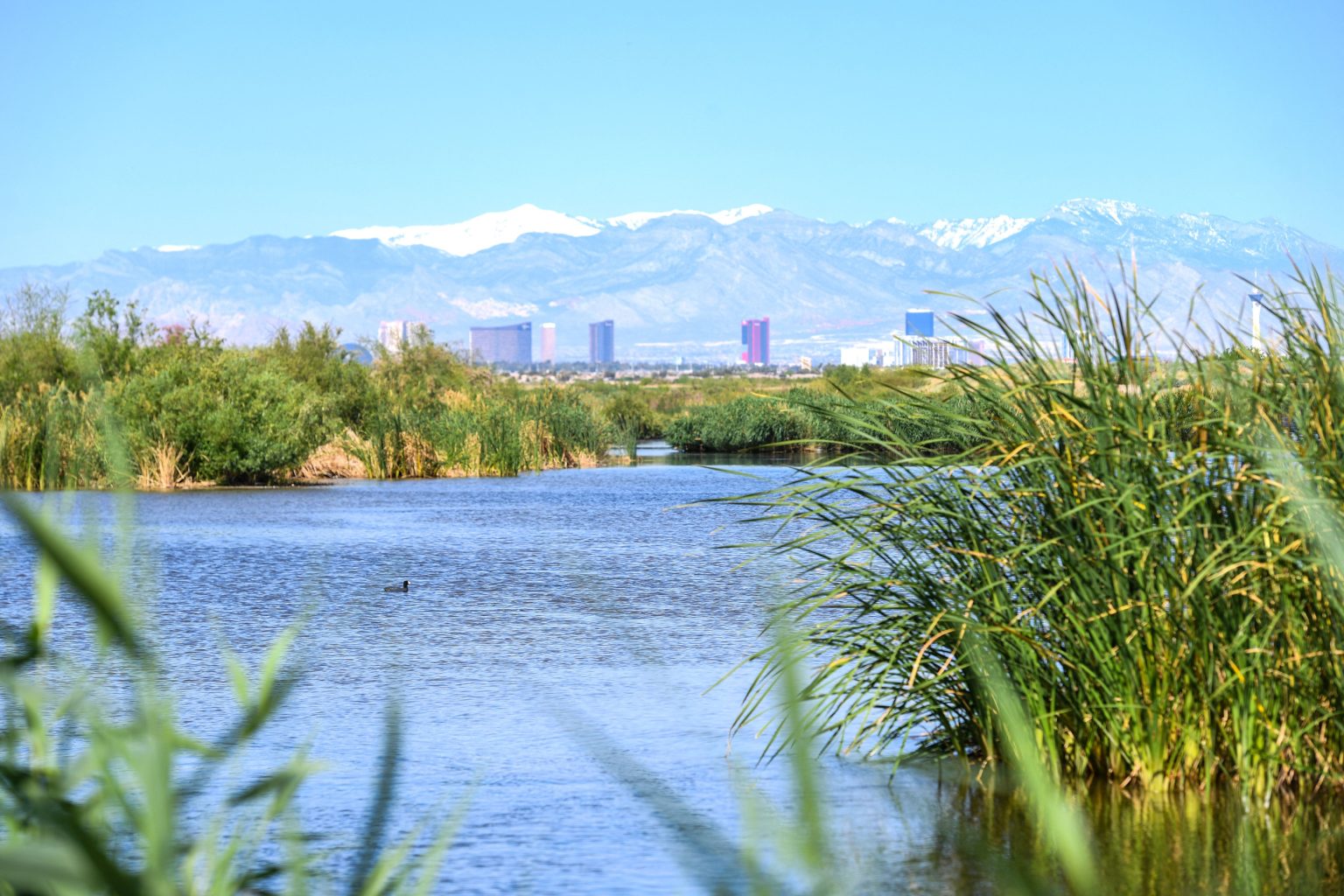Lake Mead, home to the Hoover Dam and a crucial water source for millions of people in Arizona, California, Nevada, and Mexico, has seen its water levels decline significantly in recent years. The Las Vegas Wash, which contributes about two percent of Lake Mead’s water supply, is vital in maintaining the lake’s water levels. In an effort to aid erosion control and improve habitat conditions for wildlife in the area, the Las Vegas Wash is set to receive $20 million in funding for the construction of an erosion control weir.
The announcement of the federal funding was made by Congresswoman Susie Lee, who emphasized the importance of preserving water resources for future generations. The project, funded through the U.S. Bureau of Reclamation’s WaterSMART Aquatic Ecosystem Restoration Program, will be undertaken by the Southern Nevada Water Authority. The construction of the weir aims to filter returning water to Lake Mead, reducing erosion, and creating a habitat for endangered wildlife such as the southwestern willow flycatcher and yellow-billed cuckoo.
Representative Dina Titus, also involved in the funding allocation, highlighted the importance of maintaining water quality and conservation efforts in the region. In addition to constructing the weir, the funding will be used to remove invasive tamarisk plants and replant native shrubs, trees, and grasses. These efforts will help create wetlands that serve as critical habitats for endangered and threatened species. The project aims to fortify the Las Vegas Wash for years to come and improve water quality for both local and regional water supplies.
The Las Vegas Wash, which has seen an increase in annual inflow over the past 30 years due to rapid population growth in Las Vegas, channels more than 200 million gallons of water daily to Lake Mead. Weirs and natural habitats play a critical role in reducing erosion and filtering this water resource. The construction of the erosion control weir will enhance these functions and ensure the continued flow of water to Lake Mead. The project represents a collaborative effort between federal agencies, local authorities, and environmental organizations to sustainably manage water resources in the region.
The funding allocated for the Las Vegas Wash project, made possible through the Bipartisan Infrastructure Law, demonstrates a commitment to environmental conservation and ecosystem restoration. By investing in erosion control measures and habitat restoration, stakeholders aim to protect water quality, support wildlife populations, and maintain the ecological balance of the Las Vegas Wash. The project serves as an example of proactive water management and conservation efforts in response to the challenges posed by declining water levels in Lake Mead and the surrounding areas.
Overall, the $20 million investment in the Las Vegas Wash aims to address erosion control challenges, improve water quality, and enhance habitat conditions for endangered species in the area. The construction of the erosion control weir represents a significant step towards safeguarding water resources for current and future generations. By combining infrastructure development with environmental conservation initiatives, the project seeks to ensure the long-term sustainability of the Las Vegas Wash and contribute to the preservation of the vital water supply provided by Lake Mead.








